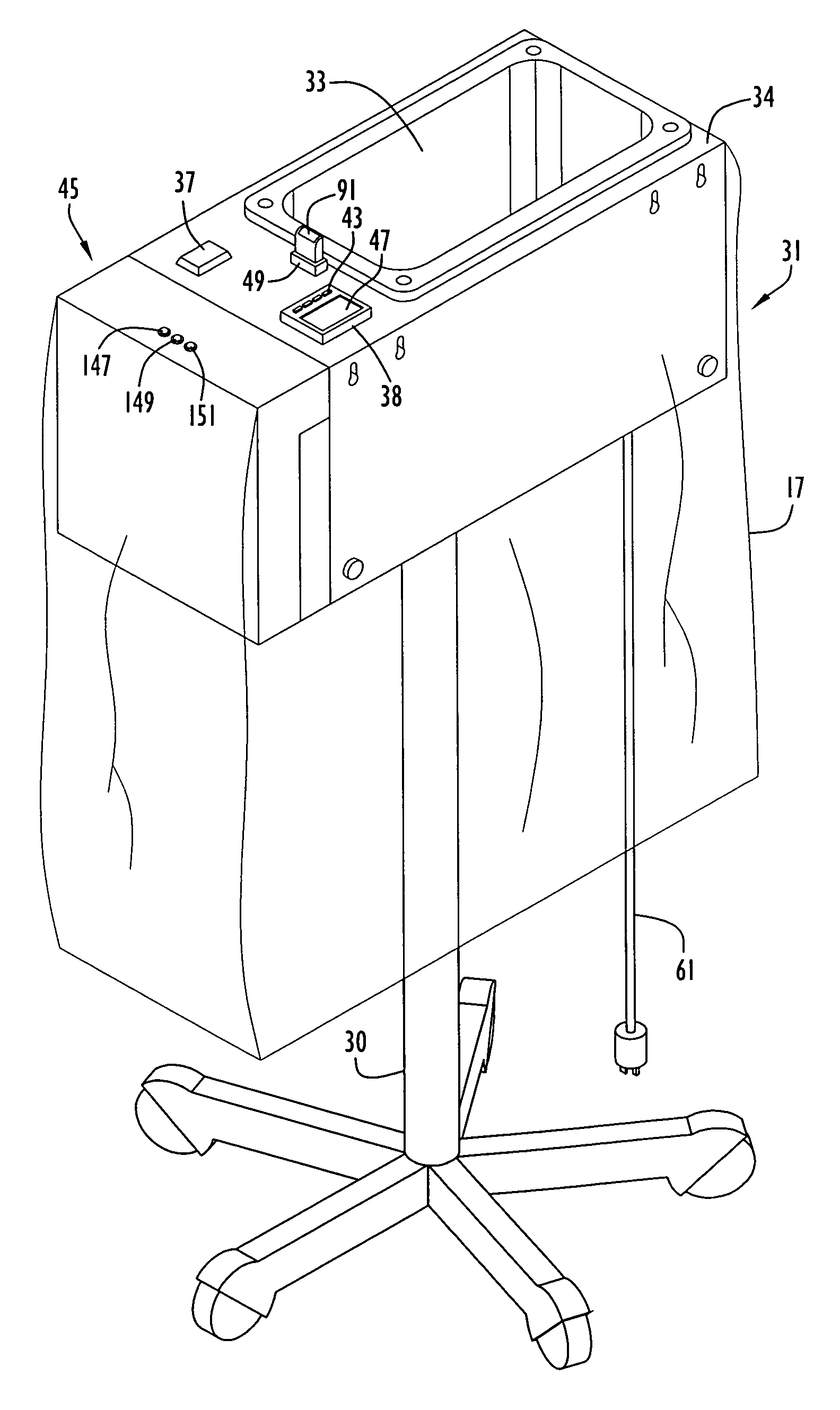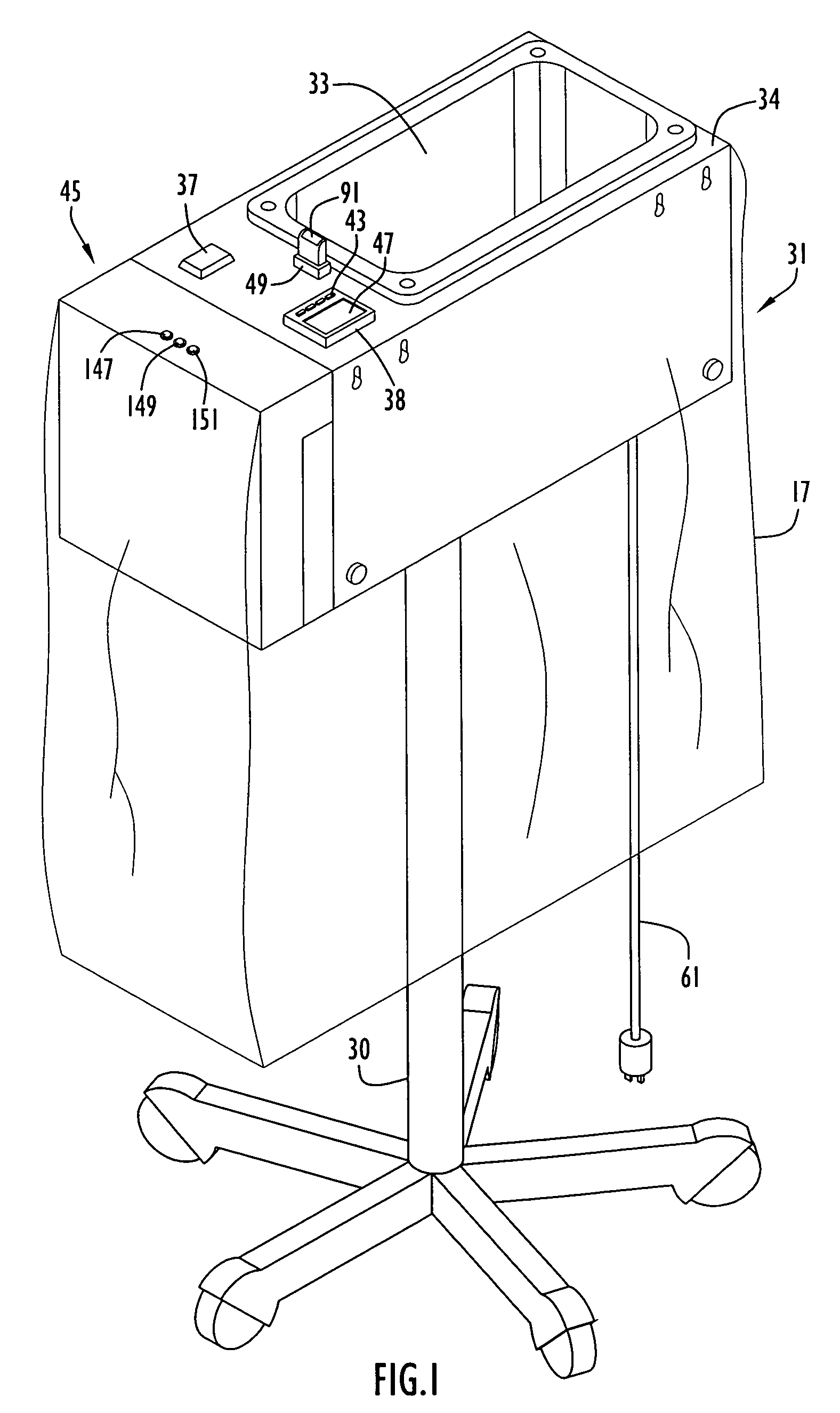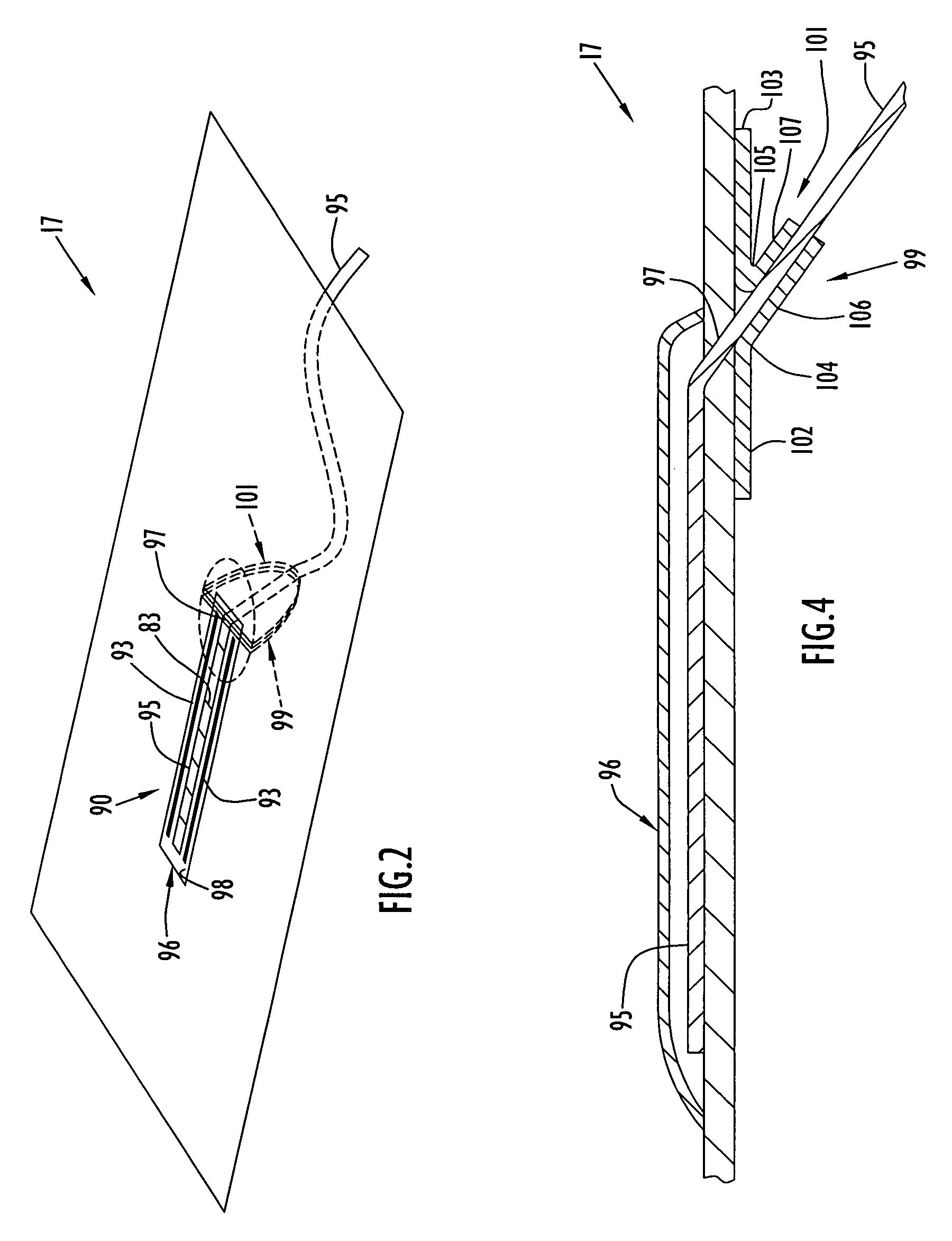System and method of detecting fluid and leaks in thermal treatment system basins
a technology of thermal treatment system and fluid detection, which is applied in the field of thermal treatment system, can solve the problems of compromising sterile conditions, complicated procedures, and high flammability of glycol or other thermal transfer medium, and achieves the effect of reducing the risk of contamination, and reducing the detection efficiency
- Summary
- Abstract
- Description
- Claims
- Application Information
AI Technical Summary
Benefits of technology
Problems solved by technology
Method used
Image
Examples
Embodiment Construction
An exemplary thermal treatment system and drape to heat a sterile medium (e.g., solution or liquid) and detect drape container conditions according to the present invention is illustrated in FIG. 1. Specifically, the system includes a cabinet or housing 31, a wiring housing 45 attached to the cabinet and a warming basin 33 recessed into a cabinet top surface 34. The cabinet or housing may be disposed on a stand 30, preferably including casters or rollers for transport, or be utilized on a table or counter top. Basin 33 may be of any shape; however, by way of example only, the basin is illustrated as being substantially rectangular. A power switch 37 and a temperature controller / indicator 38 are provided on top surface 34 adjacent basin 33 and toward wiring housing 45. The wiring housing is attached to the cabinet side wall that is closest to power switch 37 and facilitates connections as described below. A receptacle 49 is disposed on top surface 34 between the power switch and temp...
PUM
| Property | Measurement | Unit |
|---|---|---|
| voltage | aaaaa | aaaaa |
| supply voltage | aaaaa | aaaaa |
| reference voltage | aaaaa | aaaaa |
Abstract
Description
Claims
Application Information
 Login to View More
Login to View More - R&D
- Intellectual Property
- Life Sciences
- Materials
- Tech Scout
- Unparalleled Data Quality
- Higher Quality Content
- 60% Fewer Hallucinations
Browse by: Latest US Patents, China's latest patents, Technical Efficacy Thesaurus, Application Domain, Technology Topic, Popular Technical Reports.
© 2025 PatSnap. All rights reserved.Legal|Privacy policy|Modern Slavery Act Transparency Statement|Sitemap|About US| Contact US: help@patsnap.com



